#ai bioinformatics
Explore tagged Tumblr posts
Text
https://justpaste.it/f7dbu
#bioinformatics projects#ai bioinformatics#genomics in bioinformatics#microarray in bioinformatics#computational genomics#computational genetics#bioinformatics services#bioinformatics analysis of ngs data
0 notes
Text
Zoomposium with Dr. Gabriele Scheler: “The language of the brain - or how AI can learn from biological language models”

In another very exciting interview from our Zoomposium themed blog “#Artificial #intelligence and its consequences”, Axel and I talk this time to the German computer scientist, AI researcher and neuroscientist Gabriele Scheler, who has been living and researching in the USA for some time. She is co-founder and research director at the #Carl #Correns #Foundation for Mathematical Biology in San José, USA, which was named after her famous German ancestor Carl Correns. Her research there includes #epigenetic #influences using #computational #neuroscience in the form of #mathematical #modeling and #theoretical #analysis of #empirical #data as #simulations. Gabriele contacted me because she had come across our Zoomposium interview “How do machines think? with #Konrad #Kording and wanted to conduct an interview with us based on her own expertise. Of course, I was immediately enthusiastic about this idea, as the topic of “#thinking vs. #language” had been “hanging in the air” for some time and had also led to my essay “Realists vs. nominalists - or the old dualism ‘thinking vs. language’” (https://philosophies.de/index.php/2024/07/02/realisten-vs-nominalisten/).
In addition, we often talked to #AI #researchers in our Zoomposium about the extent to which the development of “#Large #Language #Models (#LLM)”, such as #ChatGPT, does not also say something about the formation and use of language in the human #brain. In other words, it is actually about the old question of whether we can think without #language or whether #cognitive #performance is only made possible by the formation and use of language. Interestingly, this question is being driven forward by #AI #research and #computational #neuroscience. Here, too, a gradual “#paradigm #shift” is emerging, moving away from the purely information-technological, mechanistic, purely data-driven “#big #data” concept of #LLMs towards increasingly information-biological, polycontextural, structure-driven “#artificial #neural #networks (#ANN)” concepts. This is exactly what I had already tried to describe in my earlier essay “The system needs new structures” (https://philosophies.de/index.php/2021/08/14/das-system-braucht-neue-strukturen/).
So it was all the more obvious that we should talk to Gabriele, a proven expert in the fields of #bioinformatics, #computational #linguistics and #computational #neuroscience, in order to clarify such questions. As she comes from both fields (linguistics and neuroscience), she was able to answer our questions in our joint interview. More at: https://philosophies.de/index.php/2024/11/18/sprache-des-gehirns/
or: https://youtu.be/forOGk8k0W8
#artificial consciousness#artificial intelligence#ai#neuroscience#consciousness#artificial neural networks#large language model#chatgpt#bioinformatics#computational neuroscience
4 notes
·
View notes
Text
🧬 How Bioinformatics is Revolutionizing Pharma & Drug Discovery 🚀

🔬 Bioinformatics is changing the way we develop medicines. From AI-driven drug discovery to genomics-based precision medicine, biotech is making healthcare smarter, faster, and more personalized. But how exactly is it transforming the pharma industry? Let’s explore!
📖 Keep scrolling to uncover how AI, data science, and bioinformatics are shaping the future of medicine!
✨ The Impact of Bioinformatics in Drug Discovery
🔹 1. Finding the Right Drug Targets Faster
📌 Old Way: Scientists spent years identifying potential drug targets. 🚀 Now: AI & bioinformatics analyze vast genomic datasets to find disease-related genes in hours!
💡 Example: AI-driven analysis helped identify key targets for cancer immunotherapy drugs like Keytruda (pembrolizumab).
🔹 2. Computational Drug Design & AI-Powered Screening
💊 Why waste years testing thousands of compounds?
Bioinformatics speeds up drug discovery through virtual screening & molecular simulations.
AI models predict how different drugs will interact with the body.
🔥 Pfizer used AI-driven bioinformatics to speed up the development of COVID-19 antivirals!
🔹 3. Personalized Medicine & Biomarker Discovery
✨ Not all treatments work for everyone. Bioinformatics makes medicine more precise!
Identifies genetic markers for disease risk.
Develops customized treatments for cancer & genetic disorders.
Predicts how patients will respond to a drug before prescribing it.
💡 Example: The breast cancer drug Herceptin was developed using bioinformatics to target HER2-positive patients.
🔹 4. CRISPR Gene Editing & Next-Gen Therapies
🧬 Bioinformatics guides CRISPR gene editing, helping scientists:
Design gene therapies for rare genetic disorders.
Reduce off-target mutations for safer treatments.
Improve DNA sequencing for precision medicine.
🔥 Companies like Intellia Therapeutics are using AI-powered bioinformatics for gene editing!
🔹 5. AI-Optimized Clinical Trials & Drug Repurposing
👩⚕️ Clinical trials cost billions. Bioinformatics helps optimize them!
Predicts side effects using AI.
Finds new uses for existing drugs (like how Remdesivir was repurposed for COVID-19).
Helps pharma companies save time & money while improving success rates.
💡 Example: AI-driven bioinformatics helped repurpose existing drugs for rare diseases!
🚀 The Future of Bioinformatics in Pharma
💡 The biotech revolution is just getting started! Expect to see: ✅ AI-powered drug design in real time. ✅ Nanomedicine & regenerative therapies. ✅ Affordable personalized medicine.
✨ What excites you most about the future of bioinformatics? Drop your thoughts in the comments! 💬👇
3 notes
·
View notes
Text
Announcement:
Hello everybody! Thank you so much for reblogging and liking our posts! We appreciate you so much for supporting us! We will soon be having a website for our blog! We will use this platform on Tumblr to show you guys sneak peeks and more stuff that we can’t wait to share until next week!
Stay Tuned!
Thank you for supporting us and your patience!
Make sure to follow us!
From,
@cs-med-world-insights
#medical field#research#health infomatics#tech#software engineering#educational#education#college#high school#medicine#biomedical engineering#biomedical#biology#healthtech#healthcare#extracurricularactivities#opportunities#technology#stem#school#small blog#engineering#bioinformatics#trending#coding#ai#informative#medtech#ap classes#computer science
2 notes
·
View notes
Text
ChatGPT for Academia: Anatomy of Advanced ChatGPT Prompt
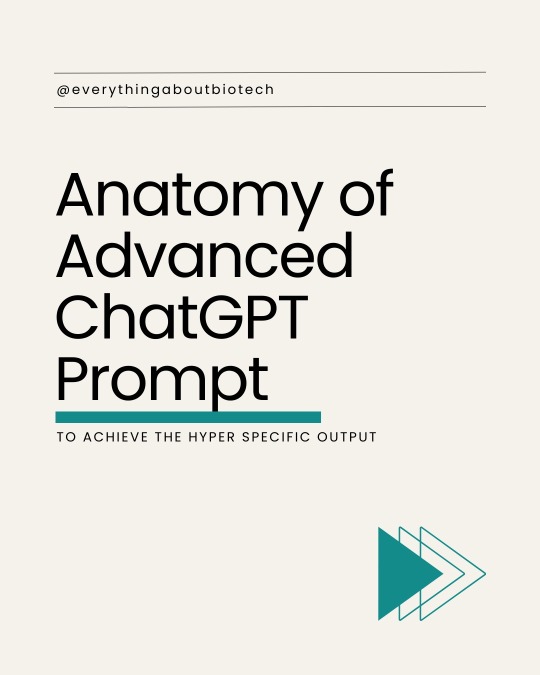
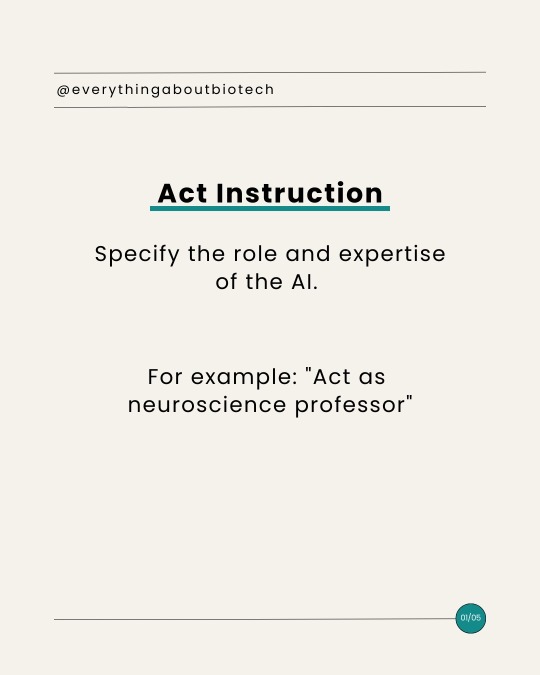
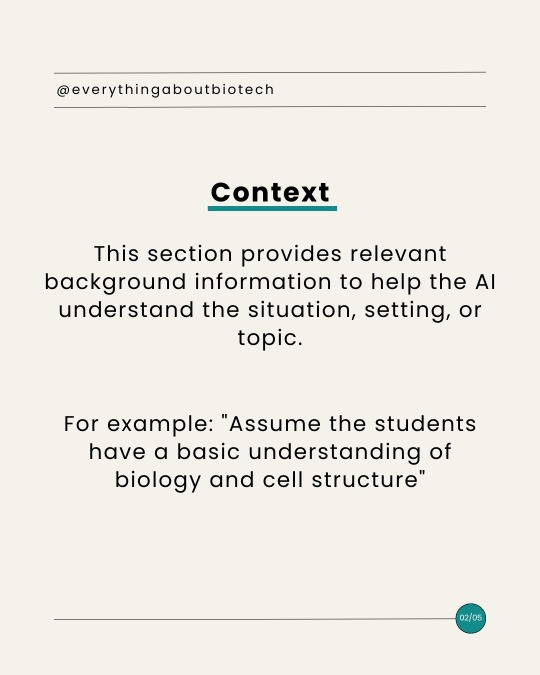
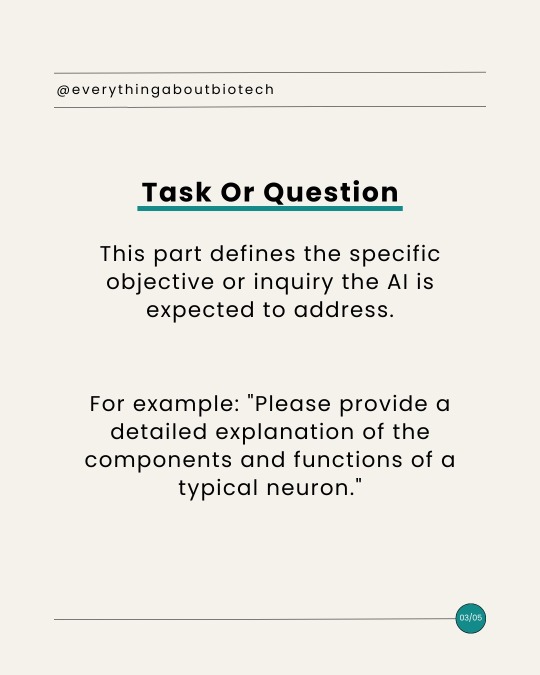
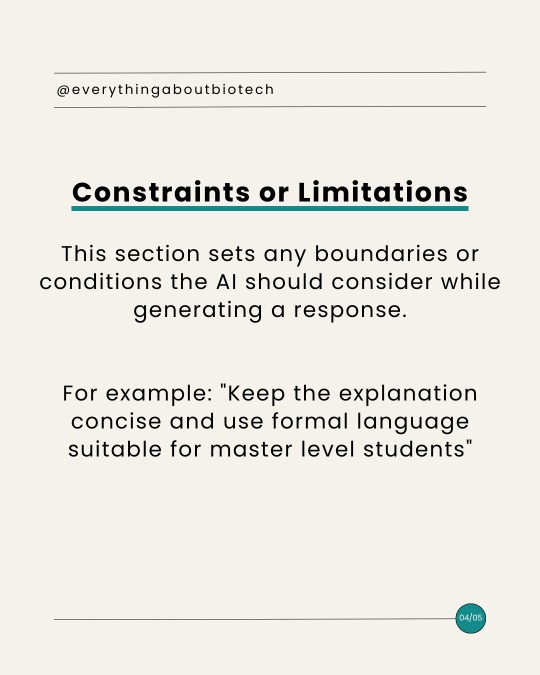
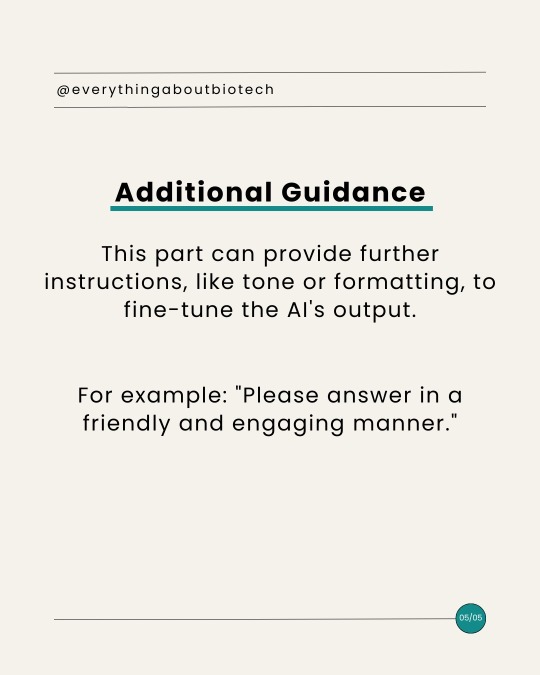
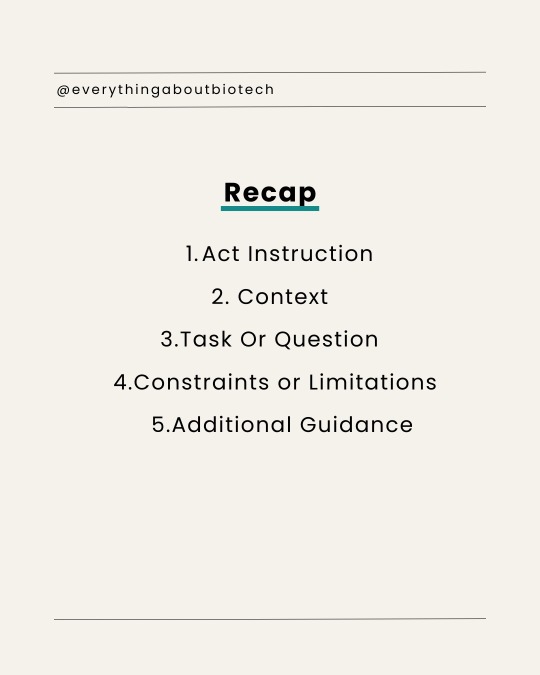
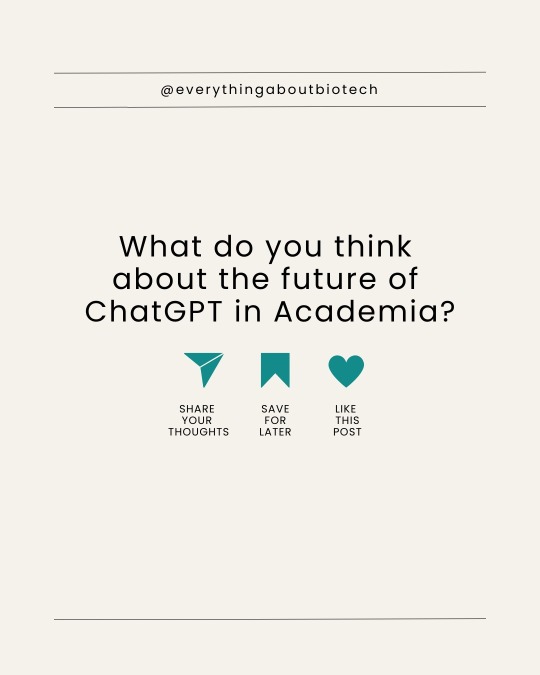
#academic chat#chatgpt#academic chatter#chatbot#ai tools#ai#biotechnology#science#bioinformatics#research#tips#communication#writing#skills#academia#design#bard#aiforeducation#academic#academic writing
8 notes
·
View notes
Text
i was curious so i went to google to try and didn’t get their same error

i got a fucking stupider one
anyways DuckDuckGo is an independent search engine that doesn’t track or log ur searches and also doesn’t have a hallucinating AI trained on copyrighted material tellin you weight in inches long.

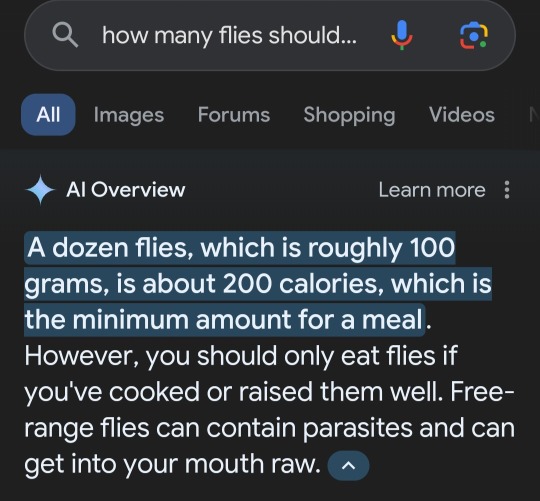
glad google ai is on top of this
#google#google generative ai#i fucking hate this shit so much#while ta-ing bioinformatics i tried to burn it into people’s heads that chatgpt isn’t a search engine#you can’t find articles or citations with it because it’s a fucking statistical algorithm#it’s a word generator weighted by predictions made through finding similarities in its training data#its not a fucking intelligence. it’s a fancy d20.#AND NOW HERES FUCKIN GOOGLE#HOW MANY FOLKS ARE GONNA GET TRICKED BY THIS STUPID THING
59K notes
·
View notes
Text
SciTech Chronicles. . . . . . . . .Mar 24th, 2025
#genes#chromosome#hippocampus#myelin#Aardvark#multimodal#GFS#democratising#cognitive#assessment#Human-AI#Collaboration#E2A#192Tbit/s#Alcatel#2028#genomics#bioinformatics#antimicrobial
0 notes
Text
Why I Believe AlphaFold 3 is a Powerful Tool for the Future of Healthcare
Insights on a groundbreaking artificial intelligence tool for health sciences research Dear science and technology readers, Thanks for subscribing to Health Science Research By Dr Mike Broadly, where I curate important public health content. A few months ago, I wrote about AlphaFold 3, a groundbreaking AI tool that helps scientists understand protein structures, which are essential for…
#academic research#AI in healthcare#alphafold#AlphaFold 3#AlphaFold 3 represents a major leap in biological understanding#AlphaFold 3 to model proteins#AlphaFold Protein Structure Database#AlphaFold Server#Artificial Intelligence#Bioinformatics#biotechnology#Democratizing Science:#Drug discovery#future of artificial intelligence#future of science#future of technology#health#health science resarch#Health sciences research#Insights from Dr Michael Broadly#Isomorphic Labs#life lessons#Machine learning in medicine#Personalized medicine#Precision Predictions#protein resarch#Protein structure prediction#Real-World Applications#research#science
1 note
·
View note
Text
Using R and Python for Data Analysis
Overview of R and Python
R and Python are two of the most popular programming languages for data analysis, each with its unique strengths and capabilities. Both languages have extensive libraries and frameworks that support a wide range of data analysis tasks, from simple statistical operations to complex machine learning models.
R
R is a language and environment specifically designed for statistical computing and graphics. Developed by statisticians, it has a rich set of tools for data analysis, making it particularly popular in academia and among statisticians. R provides a wide variety of statistical and graphical techniques, including linear and nonlinear modeling, classical statistical tests, time-series analysis, classification, clustering, and more.
Python
Python, on the other hand, is a general-purpose programming language known for its simplicity and readability. It has become extremely popular in the data science community due to its versatility and the extensive ecosystem of libraries such as Pandas, NumPy, SciPy, and scikit-learn. Python's simplicity and the power of its libraries make it suitable for both beginners and experienced data scientists.
🌟 Join EXCELR: Your Gateway to a Successful Data Analysis Career! 🌟
Are you a recent graduate or looking to make a career change? EXCELR's Data Analyst Course in Bhopal is designed just for you! Dive into the world of data analysis with our comprehensive curriculum, expert instructors, and hands-on learning experiences. Whether you're starting fresh or transitioning into a new field, EXCELR provides the tools and support you need to succeed.
🚀 Why Choose EXCELR?
Industry-Relevant Curriculum: Stay ahead with the latest trends and techniques in data analysis.
Expert Instructors: Learn from seasoned professionals with real-world experience.
Hands-On Projects: Apply your knowledge through practical projects and case studies.
Career Support: Benefit from our dedicated career services to land your dream job.
Don't miss out on the opportunity to transform your career! Enroll in EXCELR's Data Analyst Course in Bhopal today and step into the future of data analysis.
👉 Apply Now and take the first step towards a brighter future with EXCELR!
Key Features and Capabilities
R
Statistical Analysis: R is built for statistics, making it easy to perform a wide range of statistical analyses.
Data Visualization: R has powerful tools for data visualization, such as ggplot2 and lattice.
Comprehensive Package Ecosystem: CRAN (Comprehensive R Archive Network) hosts thousands of packages for various statistical and graphical applications.
Reproducible Research: Tools like RMarkdown and Sweave allow for seamless integration of code and documentation.
Python
Versatility: Python is a general-purpose language, making it useful for a wide range of applications beyond data analysis.
Extensive Libraries: Libraries like Pandas for data manipulation, NumPy for numerical operations, Matplotlib and Seaborn for visualization, and scikit-learn for machine learning make Python a powerful tool for data science.
Integration: Python integrates well with other languages and technologies, such as SQL, Hadoop, and Spark.
Community Support: Python has a large and active community, providing extensive resources, tutorials, and forums for troubleshooting.
Applications and Use Cases
R
Academia and Research: R's strong statistical capabilities make it a favorite among researchers and academics for conducting complex statistical analyses.
Bioinformatics: R is widely used in the field of bioinformatics for tasks such as sequence analysis and genomics.
Financial Analysis: R is employed in finance for risk management, portfolio optimization, and quantitative analysis.
Python
Data Wrangling and Cleaning: Python’s Pandas library is excellent for data manipulation and cleaning tasks.
Machine Learning: Python, with libraries like scikit-learn, TensorFlow, and PyTorch, is widely used in machine learning and artificial intelligence.
Web Scraping: Python’s BeautifulSoup and Scrapy libraries make web scraping and data extraction straightforward.
Automation: Python is used for automating data workflows and integrating various data sources and systems.
Tips and Best Practices
R
Leverage RMarkdown: Use RMarkdown for creating dynamic and reproducible reports that combine code, output, and narrative text.
Master ggplot2: Invest time in learning ggplot2 for creating high-quality and customizable data visualizations.
Use Dplyr for Data Manipulation: Familiarize yourself with the dplyr package for efficient data manipulation and transformation.
Python
Utilize Virtual Environments: Use virtual environments to manage dependencies and avoid conflicts between different projects.
Learn Vectorization: Take advantage of vectorized operations in NumPy and Pandas for faster and more efficient data processing.
Write Readable Code: Follow Python’s PEP 8 style guide to write clean and readable code, making it easier for collaboration and maintenance.
Conclusion
Both R and Python have their unique strengths and are powerful tools for data analysis. R shines in statistical analysis and visualization, making it a preferred choice for researchers and statisticians. Python's versatility and extensive libraries make it suitable for a wide range of data science tasks, from data wrangling to machine learning. By understanding the key features, applications, and best practices of each language, data professionals can choose the right tool for their specific needs and enhance their data analysis capabilities.
4o
#DataAnalysis#DataScience#Python#RLanguage#DataVisualization#MachineLearning#Statistics#Programming#DataWrangling#Bioinformatics#FinancialAnalysis#BigData#Analytics#TechBlog#DataScienceCommunity#DataScienceTools#DataAnalytics#DataScienceTips#Coding#DataTech#AI#ML#DataScienceLife
1 note
·
View note
Text
"Revolutionizing Biotech: How AI is Transforming the Industry"
Meta Description: Discover how Artificial Intelligence (AI) is transforming the biotech industry, accelerating innovation, and driving breakthroughs in personalized medicine, drug discovery, and more. Unlocking the Secrets of Biotech: How AI is Revolutionizing the Industry Biotech, a field that was once limited by manual processes and slow data analysis, is now experiencing a revolutionary…
View On WordPress
#AgriculturalBiotech#Agriculture#AI#ArtificialIntelligence#Bioinformatics#BiologicalSystems#BiomedicalEngineering#Biotech#DataAnalysis#DrugDiscovery#Environment#Genetics#Genomics#Healthcare#Innovation#MachineLearning#PersonalizedMedicine#PrecisionMedicine#Science#SyntheticBiology#Technology
0 notes
Text
youtube
#Genomics#biomarkers#pharmacogenomics#targeted therapy#bioinformatics#molecular diagnostics#immunotherapy#AI-driven analytics#genetic profiling#big data#epigenetics#proteomics#metabolomics#disease prediction#early diagnosis#individualized drug response#cancer therapy#regenerative medicine#precision oncology#digital health.#Youtube
0 notes
Text
Career Paths in Bioinformatics: What Jobs Can You Get? 🚀🔬

As technology and biology continue to merge, bioinformatics has emerged as one of the most exciting and in-demand fields. With applications in genomics, drug discovery, personalized medicine, and artificial intelligence, bioinformatics offers a wide range of career opportunities for those with a passion for data science, biology, and computational analysis.
If you're wondering what jobs you can get in bioinformatics, this guide explores various career paths, required skills, and industries hiring bioinformatics professionals.
What is Bioinformatics?
Bioinformatics is the interdisciplinary field that combines computer science, biology, mathematics, and data analytics to analyze biological data. It plays a crucial role in genome sequencing, drug discovery, precision medicine, and biotechnology research.
With advancements in AI, machine learning, and big data analytics, the demand for bioinformatics professionals is skyrocketing across various industries.
Top Career Paths in Bioinformatics
Whether you're a data-driven biologist or a coder with a passion for genetics, there are multiple career paths in bioinformatics. Here are some of the top job roles:
1. Bioinformatics Scientist
🔹 Role: Researches and develops new computational tools, algorithms, and models to analyze biological data. 🔹 Where You Work: Research institutions, biotech companies, pharmaceutical companies, government agencies. 🔹 Skills Needed: Python, R, machine learning, next-generation sequencing (NGS) analysis, genomics.
2. Computational Biologist
🔹 Role: Uses mathematical models and computational tools to understand biological systems. 🔹 Where You Work: Academia, biotech startups, biomedical research labs. 🔹 Skills Needed: Programming (Python, MATLAB, R), systems biology, statistical modeling.
3. Genomics Data Analyst
🔹 Role: Analyzes DNA, RNA, and protein sequences to uncover genetic variations linked to diseases. 🔹 Where You Work: Healthcare, precision medicine, genetic testing companies. 🔹 Skills Needed: NGS data analysis, cloud computing (AWS, GCP), bioinformatics pipelines.
4. Bioinformatics Software Engineer
🔹 Role: Develops and maintains bioinformatics tools, databases, and applications. 🔹 Where You Work: Biotech companies, pharma, research labs. 🔹 Skills Needed: Java, Python, SQL, API development, cloud computing.
5. Biostatistician
🔹 Role: Applies statistical techniques to interpret complex biological and clinical data. 🔹 Where You Work: Clinical trials, epidemiology, drug development, government agencies. 🔹 Skills Needed: R, SAS, statistical modeling, experimental design.
6. Proteomics and Systems Biology Researcher
🔹 Role: Studies protein structures and interactions using computational techniques. 🔹 Where You Work: Biotechnology, biomedical research, pharmaceutical companies. 🔹 Skills Needed: Mass spectrometry analysis, protein modeling, pathway analysis.
7. AI & Machine Learning in Bioinformatics
🔹 Role: Uses AI/ML models to predict disease patterns, develop new drugs, and analyze biological datasets. 🔹 Where You Work: AI-driven biotech startups, research institutions, pharma R&D. 🔹 Skills Needed: Deep learning, TensorFlow, NLP in genomics, big data analytics.
8. Biomedical Data Scientist
🔹 Role: Integrates medical and biological data for precision medicine and healthcare insights. 🔹 Where You Work: Hospitals, biotech firms, insurance companies. 🔹 Skills Needed: SQL, data visualization (Tableau, Power BI), predictive analytics.
9. Pharmacogenomics Expert
🔹 Role: Studies how genetics influence drug responses to develop personalized medicine. 🔹 Where You Work: Pharma, personalized healthcare, clinical research. 🔹 Skills Needed: Molecular biology, sequencing data analysis, pharmacology.
10. Bioinformatics Consultant
🔹 Role: Advises biotech firms, research institutions, and pharmaceutical companies on bioinformatics solutions. 🔹 Where You Work: Consulting firms, government agencies, freelancing. 🔹 Skills Needed: Strong technical and business acumen, project management.
Industries Hiring Bioinformatics Professionals
🔹 Biotech & Pharmaceutical Companies – Develop drugs, analyze genetic data, and conduct clinical trials. 🔹 Healthcare & Precision Medicine – Personalize treatment based on genomics. 🔹 Academic & Research Institutions – Conduct groundbreaking biological research. 🔹 AI & Machine Learning in Life Sciences – Predict disease trends using bioinformatics algorithms. 🔹 Agriculture & Environmental Science – Improve crop genetics and study ecosystems. 🔹 Government & Regulatory Agencies – Monitor public health and biothreats.
Skills You Need for a Career in Bioinformatics
To excel in bioinformatics, you need a blend of technical, biological, and analytical skills: ✔ Programming Languages – Python, R, Java, Perl ✔ Data Science & Machine Learning – TensorFlow, Scikit-learn, Big Data ✔ Genomic & Proteomic Analysis – NGS, BLAST, FASTA, RNA-Seq ✔ Bioinformatics Tools – Bioconductor, GATK, Cytoscape ✔ Database Management – SQL, NoSQL, Hadoop ✔ Statistics & Biostatistics – Experimental design, Bayesian modeling ✔ Cloud Computing – AWS, Google Cloud for large-scale bioinformatics analysis
How to Get Started in Bioinformatics
If you're new to bioinformatics, here are a few steps to kickstart your career: 1️⃣ Get a Degree – A background in bioinformatics, computational biology, genetics, or computer science is recommended. 2️⃣ Learn Programming – Start with Python & R, the most widely used languages in bioinformatics. 3️⃣ Gain Hands-on Experience – Work on open-source projects, Kaggle challenges, or internships. 4️⃣ Take Online Courses – Platforms like Coursera, edX, and Udemy offer excellent courses in bioinformatics. 5️⃣ Stay Updated – Follow industry trends, join bioinformatics communities, and attend workshops. 6️⃣ Build a Portfolio – Showcase your skills through GitHub projects, bioinformatics scripts, and data analysis.
Conclusion: Is Bioinformatics a Good Career Choice?
Yes! Bioinformatics is a future-proof career with endless opportunities in healthcare, biotechnology, AI, and data science. As the demand for genomics, personalized medicine, and biotech research grows, so does the need for skilled bioinformatics professionals.
If you're fascinated by biology, coding, and big data, a career in bioinformatics could be your gateway to solving real-world medical and scientific challenges.
💡 Are you interested in bioinformatics? Have questions about career paths? Drop a comment below! 🚀🔬
🔹 Like & Share this post if you found it helpful! 🔹 Follow for more insights on careers in biotechnology and data science!
#bioinformatics#CareerGuide#biotechcareers#datascience#genomics#biopractify#biotechnology#machinelearning#biotech#bioinformaticstools#aiinbiotech#ai#DataScience#Genomics#AIinBiology#MachineLearning#BiotechJobs#STEMCareers#ComputationalBiology
0 notes
Text
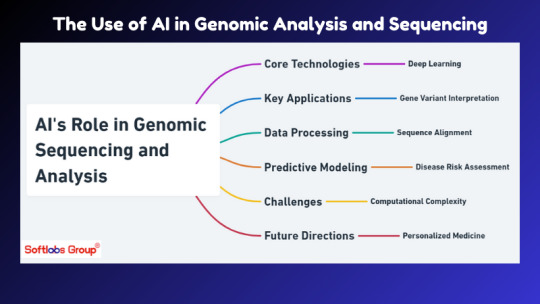
Unravel the impact of AI in Genomic Sequencing and Analysis! Delve into how artificial intelligence accelerates genetic research, from decoding DNA sequences to predicting disease risks. Explore the cutting-edge algorithms transforming vast genomic data into actionable insights for personalized medicine and precision healthcare. Join us at the forefront of genetic exploration, where AI revolutionizes how we understand and harness the power of our DNA.
0 notes
Text
Elucidata at Bio-IT World Conference 2024: Accelerating Drug Discovery through AI-Ready Biomedical Data
BioIT World Conference and Expo, held on April 24th in Boston, is one of the biggest conferences that brings in professionals from the biomedical, bioinformatics, and IT sectors to converge, share insights, and explore the advancements shaping the future of Life Sciences. Like every other year, Elucidata attended the conference with a lot of zeal and enthusiasm. Here we talk about the highlights of the conference and our key takeaways.
Source Link
0 notes
Text
Rules:
Python is the best language for real people (aka people who are not designated software devs)
This blog is a consolidation of all my rage. Main blog is a totally-mysterious grad student biologist tgirl who does bioinformatics. If you want politeness, go there.
Science has found NO NEED for AI more advanced than scikit-learn
The best IDE is the built in Ubuntu text editor
Prep for a day of computational research with a refreshing shower coffee
If you use C or it's variants I'm throwing you out of a bus window
If you use R.... I'm so sorry
If you use Java..... Who hurt you?
384 notes
·
View notes
Text
Also preserved on our archive
Melbourne researchers have discovered more than 200 new vaccine target candidates from the COVID-19 virus, SARS-CoV-2, that could lead to the development of vaccines with a longer lasting broader immunity than existing vaccinations.
In a paper published in the journal Nature Communications, research led by Prof Anthony W. Purcell and first-authored by Dr. Asolina Braun from the Monash Biomedicine Discovery Institute, investigates seven proteins of the COVID-19 virus that could become targets for new vaccines.
The initial vaccines designed to combat COVID-19 were targeted against the original Wuhan strain Spike protein. However, while this approach led to the generation of several highly effective, safe vaccines within an astonishingly brief timeframe, it also comes with some limitations, according to Dr. Braun. "The SARS-CoV-2 virus has mutated its Spike protein leading to lower efficacy of current vaccines," she said.
"Also, the original vaccines focused on B cell-mediated antibody responses for developing immunity. We now know that recruiting the other arm of the immune system, the T cells, can help to maintain immunity for longer."
In the study the researchers describe more than 200 SARS-CoV-2-derived peptides that could be targets for new and improved vaccines against COVID-19 and validate that a number of those peptides can trigger T cell responses in convalescent individuals.
Reflecting on this achievement, lead investigator Prof Tony Purcell remarks, "As part of a long term collaboration with Evaxion Biotech, we pivoted and turned our attention to SARS-CoV-2 during the pandemic. Rather than continue the mainstream attention that focused predominantly on the Spike glycoprotein, we turned our attention to other more conserved viral proteins as potential next generation vaccine targets.
"The combination of the Monash team's epitope discovery by immunopeptidomics and protein chemistry, T cell immunology at the Peter Doherty Institute and Evaxion's AI-guided bioinformatics expertise was critical to the development of this paper that highlights the potential of several conserved viral proteins as vaccine candidates."
According to Dr. Braun, COVID-19 still continues to pose a high burden on health systems worldwide, and "this continued burden is mainly caused by the spread of several new variants. Thus, an unmet need remains for the development of novel vaccines able to target several viral strains and confer wide-spread protection in the global population," she said.
"The next generation of vaccines will benefit from eliciting both B-cell and T-cell mediated immunity toward multiple COVID proteins. Our study has uncovered promising candidates for the development of just such vaccines."
More information: Asolina Braun et al, Mapping the immunopeptidome of seven SARS-CoV-2 antigens across common HLA haplotypes, Nature Communications (2024). DOI: 10.1038/s41467-024-51959-6 www.nature.com/articles/s41467-024-51959-6
#mask up#covid#pandemic#covid 19#wear a mask#public health#coronavirus#sars cov 2#still coviding#wear a respirator#covid vaccines#covid vax#covid vaccine
86 notes
·
View notes